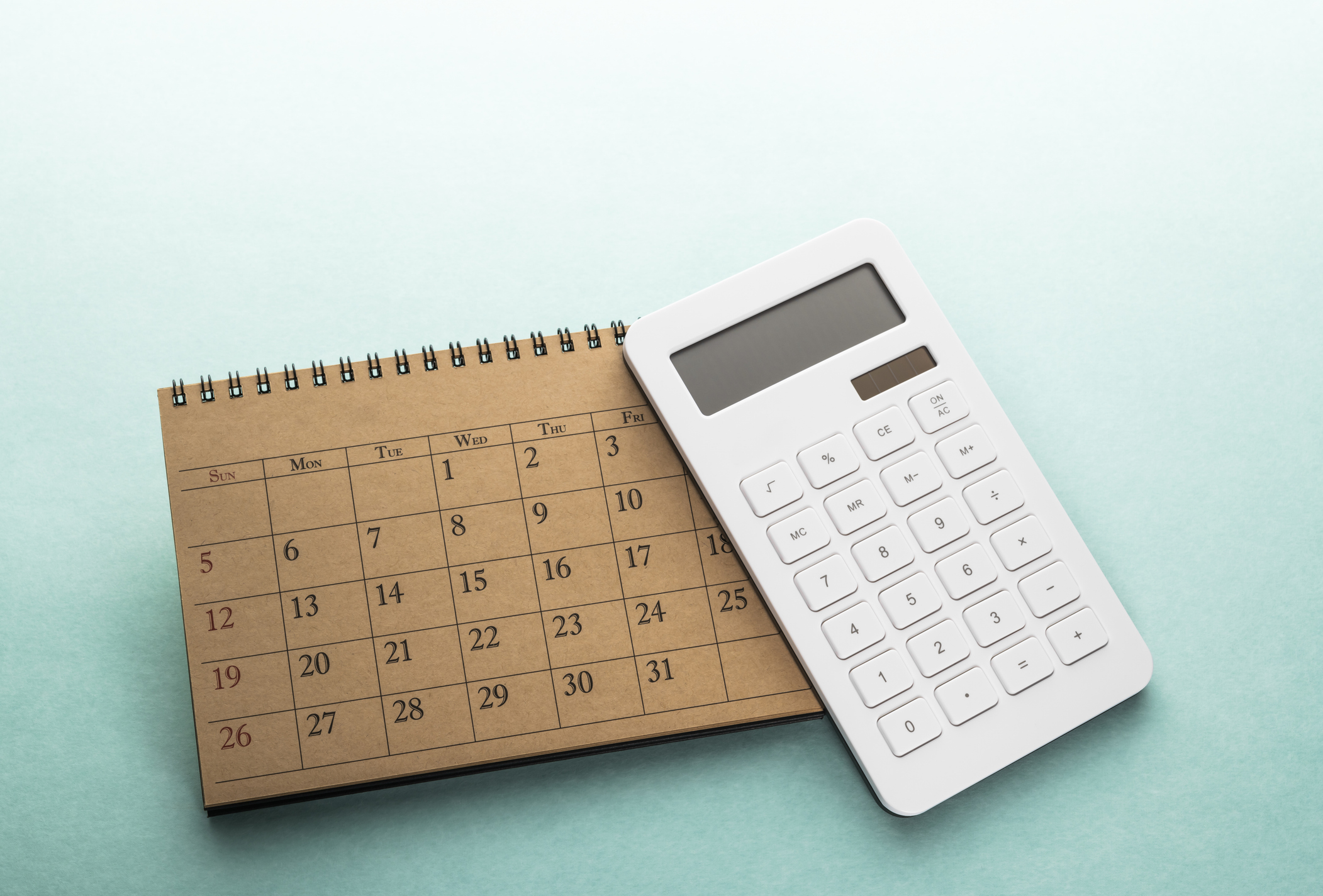When Are Estimated Tax Payments Due in 2025?
Learn when quarterly estimated tax payments are due, who needs to pay, and how to calculate them.


Making estimated tax payments is important since the U.S. tax system operates on a "pay-as-you-go" basis. This means the IRS expects you to pay a portion of your income as soon as you earn it.
As an employee, as many know, the government automatically withholds taxes from your paycheck based on your Form W-4. Also, retirees may have taxes taken from their Social Security payments and retirement plan distributions.
However, what if you are self-employed or don't have taxes withheld from other sources of taxable income, such as dividends, capital gains, interest, rental income, or alimony? In that case, you are responsible for making estimated tax payments to the IRS.

Sign up for Kiplinger’s Free E-Newsletters
Profit and prosper with the best of expert advice on investing, taxes, retirement, personal finance and more - straight to your e-mail.
Profit and prosper with the best of expert advice - straight to your e-mail.
What are estimated tax payments?
Estimated tax payments are the taxes you pay to the IRS throughout the year to account for income you've earned that wasn't subject to tax withholding.
- When paying estimated taxes, you usually make four equal payments and follow the IRS's yearly schedule. (More on that below.)
- Estimated tax payments are commonly referred to as "quarterly" payments, even though they might not necessarily be three months apart or cover three months of income.
Quarterly estimated tax payment due dates 2025
The table below shows the payment deadlines for 2025. (Note that some people will have extended IRS tax deadlines for estimated tax payments due to residing or working in IRS-designated disaster areas.)
Payment | When Income Earned | Due Date |
1st Quarter Payment 2025 | Jan. 1 to March 31, 2025 | April 15, 2025 |
2nd Quarter Payment 2025 | Apr. 1 to May 31, 2025 | June 17, 2025 |
3rd Quarter Payment 2025 | June 1 to Aug. 31, 2025 | Sept. 16, 2025 |
4th Quarter Payment 2025 | September 1. to Dec. 31, 2025 | Jan. 15, 2026 |
Sometimes, you can deviate from the set estimated tax payments schedule by following specific rules.
For example, if you pay all your estimated taxes for the 2024 tax year before Tax Day, you will not have to make additional tax payments for the rest of the year.
Additionally, if you submit your 2024 federal income tax return by Jan. 31, 2025, and pay the entire balance due, you won't have to make the final estimated payment for 2024, which would normally be due on Jan. 15, 2025.
Who should make quarterly estimated tax payments?
You only need to make estimated tax payments if you have taxable income.
Note: The most common taxable income for many people is earned income (e.g., wages, tips, bonuses, etc.). However, some people are surprised that they may have to pay taxes on unemployment income, taxes on Social Security, or other taxes on other retirement income.
But for estimated taxes, suppose you have taxable income in Aug. 2025. In that case, you don't have to make an estimated tax payment until Sept. 16, 2025. You can pay the entire estimated tax by the Sept. 15 due date or pay it in two installments by Sept. 16, 2025, and January 2026.
If more than two-thirds of your income is from farming or fishing, you only need to make one estimated tax payment for the 2024 tax year, due by Jan. 15, 2025. If you meet the farming/fishing income threshold and file and pay your taxes by Mar. 1, you don't need to make estimated payments.
How to calculate estimated taxes
To calculate your estimated tax payments, use Form 1040-ES.
- First, determine your expected adjusted gross income (AGI), taxable income, taxes, deductions, and credits for the year.
- Then follow the instructions on the Form 1040-ES worksheet to assist you.
You can refer to your previous year's tax return as a general guide. Your goal is to estimate your expected annual income.
If you overestimated your tax, you can adjust your estimated tax payments using another Form 1040-ES worksheet.
You can also recalculate your tax estimate if your circumstances change or tax law changes impact your tax liability for the year.
How to make estimated tax payments
To pay estimated taxes, use Form 1040-ES. You can pay by check, cash, money order, credit card, or debit card.
There are also online payment options like the Electronic Federal Tax Payment System (EFTPS). The instructions for Form 1040-ES explain the different payment methods.
Penalties for late estimated tax payments
Failing to pay enough taxes during the year can lead to IRS penalties. Even if you anticipate a refund when you eventually file your return, the IRS may penalize late or insufficient estimated tax payments.
There are some potential exceptions to tax penalties, however. For example, if you've experienced an unexpected event like a casualty, disaster, or unusual circumstance. Or, if you're at least age 62, retired, or have become recently disabled, and your underpayment resulted from a "reasonable cause" and not "willful neglect."
Since these exceptions are limited, consider paying most of your tax liability for the year through withholding or estimated tax payments.
State estimated taxes
If you live in a state with income tax, remember that you might need to make estimated tax payments to your state as well.
The due dates for state payments may differ from the federal dates, so check with your state's tax agency.
Related Content
Get Kiplinger Today newsletter — free
Profit and prosper with the best of Kiplinger's advice on investing, taxes, retirement, personal finance and much more. Delivered daily. Enter your email in the box and click Sign Me Up.

As the senior tax editor at Kiplinger.com, Kelley R. Taylor simplifies federal and state tax information, news, and developments to help empower readers. Kelley has over two decades of experience advising on and covering education, law, finance, and tax as a corporate attorney and business journalist.
-
 Here’s How the Trump Harvard Tax Threat Could Impact You
Here’s How the Trump Harvard Tax Threat Could Impact YouTax Law Trump's latest showdown raises fundamental questions that could reach beyond nonprofit tax status.
By Kelley R. Taylor
-
 5 treats to splurge on with your tax refund
5 treats to splurge on with your tax refundWant to use your tax refund to splurge on a little something nice this spring? Here are five treats to make the most out of that extra cash.
By Rachael Green
-
 Which Generation Pays the Most Taxes in the US?
Which Generation Pays the Most Taxes in the US?Tax Burden Polls show that most people feel like taxes are unfair. But which age group bears the brunt of the tax burden in the United States?
By Kelley R. Taylor
-
 Tax Day 2025: Don’t Miss These Freebies, Food Deals and Discounts
Tax Day 2025: Don’t Miss These Freebies, Food Deals and DiscountsTax Day You can score some sweet deals on April 15 in some select restaurants like Burger King, Shake Shack, and more.
By Gabriella Cruz-Martínez
-
 Tax Time: Does Your Kid Influencer Owe Taxes?
Tax Time: Does Your Kid Influencer Owe Taxes?State Tax Some minors are making big money on social media. Here’s how to know if they need to file taxes.
By Gabriella Cruz-Martínez
-
 Free IRS Tax Filing for 30 Million People: Will It Continue Under Trump?
Free IRS Tax Filing for 30 Million People: Will It Continue Under Trump?Tax Filing Direct File was piloted last year in 12 states and has since expanded to 25. But some wonder whether the program will last under the Trump administration.
By Gabriella Cruz-Martínez
-
 How Caregivers for Adults Can Save on Taxes in 2025
How Caregivers for Adults Can Save on Taxes in 2025Tax Breaks Caring for your parent or spouse can be stressful, but the IRS offers tax breaks for qualifying taxpayers. Here they are.
By Kate Schubel
-
 U.S. Treasury to Eliminate Paper Checks: What It Means for Tax Refunds, Social Security
U.S. Treasury to Eliminate Paper Checks: What It Means for Tax Refunds, Social SecurityTreasury President Trump signed an executive order forcing the federal government to phase out paper check disbursements by the fall.
By Gabriella Cruz-Martínez
-
 IRS Layoffs Spark Delays, Doubt This Tax Season
IRS Layoffs Spark Delays, Doubt This Tax SeasonTax Season Tax experts say Trump’s downsizing of the IRS is already causing problems.
By Gabriella Cruz-Martínez
-
 States with the Highest Income Tax Rates for Retirees
States with the Highest Income Tax Rates for RetireesState Tax You may reconsider living and retiring in one of these states due to high taxes.
By Kate Schubel